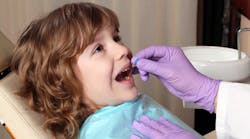Putting children under the umbrella of dental coverage is not so simple through the Affordable Care Act
January 6, 2014
The Affordable Care act created a mandate, as part of the 10 essential health benefits that plans should offer, for all plans to offer dental benefits for children.
From last year: How pediatric dental benefits will change under the ACA
But children covered under plans in the new healthcare marketplace aren’t necessarily covered under dental – and some states don’t have a mandate that parents purchase pediatric dental insurance at all.
Since dental insurance is often offered outside of medical plans, people shopping for coverage in the healthcare marketplace aren’t receiving financial help for dental plans because stand-alone plans don’t qualify for subsidies.
Dental plans in the new healthcare marketplace
Children’s dental coverage can be packaged in two ways in state and federal exchanges: either embedded in medical insurance plans, or separately in stand-alone plans.
Although both options can exist simultaneously, both are not always available: for instance, according to a New York Times article, state exchanges in New York and Massachusetts offer both embedded and stand-alone plans. However, some state plans, such as California’s, don’t offer embedded dental coverage, which means that parents won’t be receiving government subsidies for providing dental care to their children through a stand-alone plan.
Jeff Album, the vice president of public and government affairs for Delta Dental California, New York, and Pennsylvania, and affiliates wrote a letter to the editorin response to the NYT article:
“[This issue] is frustrating the dental industry right now owing to the lack of any mandate for pediatric dental care and the failure of the IRS to include stand-alone dental premiums when calculating premium subsidies.
“When pediatric dental is embedded in many of the medical policies sold in health exchanges across the country (as well as outside of exchanges in the small-group and individual marketplace), such policies often require a combined medical-dental deductible of $2,000 or more before any dental coverage is actually offered. That’s illusory dental ‘coverage.’”
Unless Congress reaches a resolution to subsidize premiums on separate dental plans, many children will continue to go without dental benefits, which wasn’t the plan originally.







